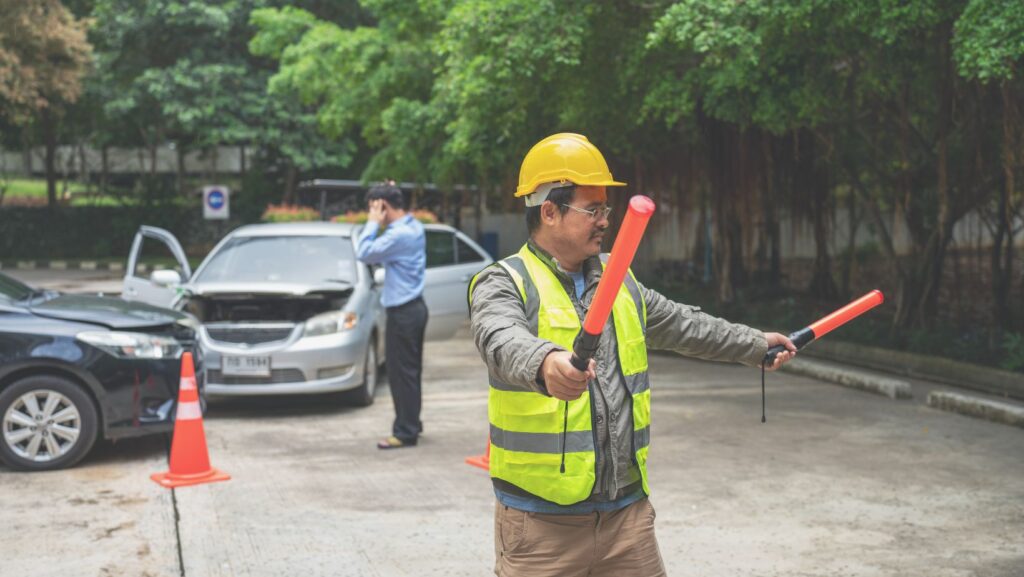Road safety audits are a vital procedure in ensuring the safety and efficiency of transportation systems. These audits involve a systematic evaluation of proposed or existing road projects to identify potential safety issues and opportunities for improvement. By scrutinizing every aspect of the road’s design and operation, safety auditors play a crucial role in preventing accidents and enhancing the overall safety of road users.
Road Safety Audit
 A Road Safety Audit (RSA) involves a formal assessment of potential safety hazards on existing or future road projects. This comprehensive examination focuses on pinpointing elements that might enhance or compromise road safety.
A Road Safety Audit (RSA) involves a formal assessment of potential safety hazards on existing or future road projects. This comprehensive examination focuses on pinpointing elements that might enhance or compromise road safety.
A Road Safety Audit aims to identify critical safety concerns in road design before projects are completed. Transportation experts scrutinize aspects such as sightlines, signage, and pedestrian pathways to ensure every feature promotes optimal safety. RSAs analyze different scenarios, including various weather conditions and traffic volumes, to safeguard all road users, such as drivers, cyclists, and pedestrians.
Key Stages in a Road Safety Audit
Road Safety Audits (RSAs) are critical in enhancing the safety features of road networks. These audits proceed through several key stages to ensure thoroughness in identifying and mitigating road safety hazards.
Initial Data Collection and Analysis
 The first stage in a Road Safety Audit involves gathering and analyzing existing data about the road segment in question. Experts collect information on traffic volumes, accident history, and road design parameters. This data serves as a baseline from which transportation professionals can assess the current safety performance of a road project. Analysis during this phase aids in pinpointing specific areas that might pose safety risks to drivers, pedestrians, and cyclists.
The first stage in a Road Safety Audit involves gathering and analyzing existing data about the road segment in question. Experts collect information on traffic volumes, accident history, and road design parameters. This data serves as a baseline from which transportation professionals can assess the current safety performance of a road project. Analysis during this phase aids in pinpointing specific areas that might pose safety risks to drivers, pedestrians, and cyclists.
Following data collection, the audit team conducts field visits to observe road conditions directly. During these visits, auditors assess the physical and operational characteristics of the road. They pay close attention to features such as intersections, pedestrian crossings, and signage. Observations made during these visits offer insights into potential safety issues that are not always apparent from the data alone. This hands-on assessment is essential for crafting recommendations that are grounded in real-world scenarios.
Report Preparation
The final stage in the Road Safety Audit process is preparing a comprehensive report. This document includes all findings from the initial analysis and field observations, outlining potential safety issues and recommending corrective actions. The report also prioritizes these recommendations based on their expected impact on road safety. The goal is to provide a clear and actionable guide for road authorities to implement enhancements that will significantly reduce risks and improve safety for all road users.
Importance of Road Safety Audits
Road Safety Audits (RSAs) are critical evaluations designed to enhance roadway safety and efficiency. These assessments play a vital role in preventing accidents and ensure safer conditions for all users, including drivers, cyclists, and pedestrians.
Conducting Road Safety Audits enhances public safety by identifying and mitigating potential hazards on roadways. By examining elements like sightlines and pedestrian pathways, RSAs contribute to a safer driving environment. This systematic vetting process helps reduce the risk of accidents, benefiting the entire community by making streets safe for everyone, whether motorists or pedestrian traffic.
Challenges in Conducting Road Safety Audits
 The execution of Road Safety Audits (RSAs) poses numerous challenges that can affect their effectiveness. These challenges stem from logistical difficulties to resistance and legal constraints, each impacting the quality and outcome of the audits.
The execution of Road Safety Audits (RSAs) poses numerous challenges that can affect their effectiveness. These challenges stem from logistical difficulties to resistance and legal constraints, each impacting the quality and outcome of the audits.
Organizing Road Safety Audits involves complex coordination, requiring precise timing and resources. Auditors face difficulties securing the necessary data, as compiling traffic volumes, accident reports, and road usage statistics demands access to multiple data sources, often controlled by different entities. Geographic and environmental factors also pose significant logistical challenges, as auditors must often conduct evaluations under varying and sometimes harsh weather conditions. These factors collectively make planning and executing RSAs considerably challenging.
Final Thoughts
Road safety audits are pivotal in fostering safer road environments for everyone. By meticulously evaluating road projects, these audits pinpoint safety hazards and offer actionable recommendations that save lives. Their comprehensive approach from data collection to field observation ensures that every potential risk is addressed enhancing road safety comprehensively. As urban areas continue to grow and traffic becomes more complex the role of RSAs becomes increasingly crucial in maintaining and improving public safety.



